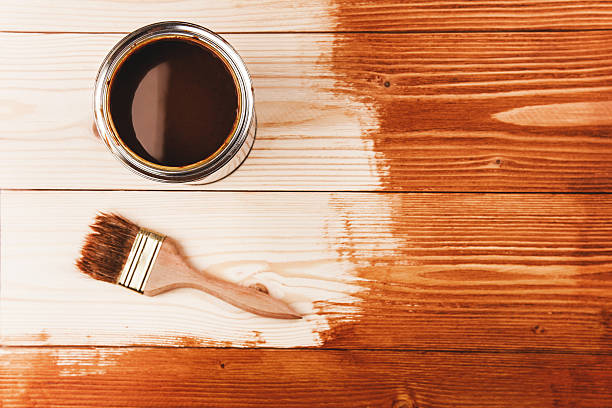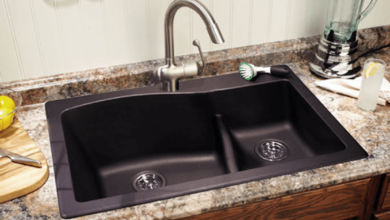
How to Remove Stains From Patios and Decks
In the summer, our decks and patios are our favorite places to be. And why on earth not? Wonderful times spent with good friends, a loving family, and delicious food are sure to be cherished forever. However, our wooden decks, brick, or stone patios may occasionally take a hammering from stains caused by food, trees, dirt, and grime. These blemishes can be unsightly. Then, in order to get it back into shape, you will need to haul out the pressure washer and put in some hard work. In this lesson, we will go over some of the most typical stains that might appear on your deck or patio, as well as the methods that can be used to remove them. Read More
Removing Stains From Hard Surface Patios
Concrete, brick pavers, flagstone, and concrete pavers are some of the materials that can be used to create hard surface patios. They have iron-like durability, yet they stain easily and require washing just like any other material. Let’s go over some typical stains and the appropriate cleaning methods for them. In any circumstance, another option available to you is to make use of a power washer, provided that you possess one.
Stain Source: Food, oil, grease
Cleaning Technique: Use a dishwashing detergent that is designed to cut grease or a biodegradable degreaser such as Simple Green®, both of which are readily available to purchase from Amazon.
Combine the detergent with hot or warm water, and then, using a brush or broom with stiff bristles, vigorously massage the soapy solution into the stain using a back-and-forth motion. Repeat the process of rinsing with clean water as many times as is required to eliminate the stain.
If the stain is really tenacious and refuses to come out, consider incorporating a little ammonia into the cleaning solution and continuing with the process as outlined above. In the event that this does not work, you can try cleaning the area with mineral spirits and then thoroughly rinsing it with clean water.
Stain Source: Paint, paraffin, or wax
Cleaning Technique: To begin, take a putty knife and attempt to remove as much of the residue as you can from the surface. Scrub the area with a brush that has bristles made of metal and clean water to see if you can get the particles to come loose. In the event that this does not work, you can try cleaning the area with mineral spirits and then thoroughly rinsing it with clean water.
Stain Source: Blood, tea, coffee, soft drinks, juices, mixes
Cleaning Technique: Use a dishwashing detergent that cuts grease or a biodegradable degreaser such as Simple Green®, only make sure to combine the detergent with cold water this time. This method is the same as the one used for food, oil, and grease stains. Make use of a broom or brush with bristles that are particularly stiff, and then apply the soapy solution to the stained region in copious amounts using a vigorous back-and-forth motion. Repeat the process of rinsing with clean water as many times as is required to eliminate the stain.
Stain Source: Tar, rubber marks
Cleaning Technique: This is a challenging situation. Make use of a dishwashing detergent that effectively cuts grease or a biodegradable degreaser that is blended with warm to hot water. Employing a scrub brush with firm bristles, vigorously apply the soapy solution to the soiled area while moving the brush in a back and forth motion. Repeat the process of rinsing with clean water as many times as is required to eliminate the stain.
If it doesn’t work, you can try applying a substantial amount of mineral spirits to the affected area, scrubbing it with a brush, and then blotting it with a clean cloth. You should become used to doing this multiple times.
You can use muriatic acid as a last option by following the directions provided by the manufacturer, mixing it with water in a ratio of 1:1, and applying it with a brush with stiff bristles. When you are finished, flush with water. Always make sure to safeguard your eyes and hands by wearing goggles and gloves made of strong rubber. However, you should be aware that muriatic acid has the potential to discolor certain paving surfaces.
Stain Source: Efflorescence
Cleaning Technique: When new masonry is built, the salts in the grout can sometimes cause a white powdery film to form on its surface. To remove this stain, rub the affected area with a wire brush made of stainless steel, and then rinse the area well. If it does not work, you might try cleaning the masonry using a commercial product like MasonrySaver.
Stain Source: Dirt and mud
Cleaning Technique: This spot may be removed with relative ease. First, you should just use water and a brush or broom that is rather stiff. Depending on whether or not it is necessary, apply dishwashing soap or a biodegradable degreaser such as Simple Green®. You can also try rubbing trisodium phosphate into the stain with a broom or scrub brush. The phosphate should be combined with warm water. Proceed by rinsing with fresh water.
Stain Source: Soot
Cleaning Technique: Another challenging situation here. The best way to clean it is with muriatic acid that has been diluted with water at a ratio of 1 to 1 and scrubbed with a brush with firm bristles, as specified by the manufacturer. When you are finished, as in the past, flush with water. Remember to safeguard your eyes and hands by donning goggles and gloves made of thick rubber. However, you should be aware that muriatic acid has the potential to discolor certain paving surfaces.
Removing Stains From Wood Decks
The chemicals that we utilized on the hard patio surfaces are not safe to use around wood decks. Following the steps indicated in the guide on how to clean and brighten a wood deck is your best bet for maintaining a wood deck in good condition. Alternately, adhere to the other cleaning requirements.




